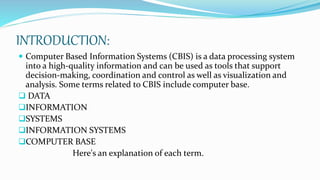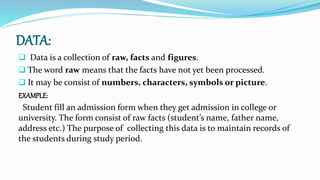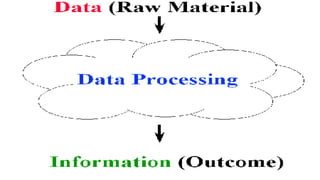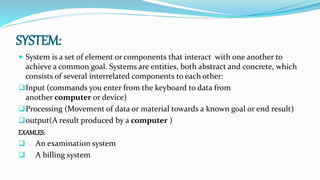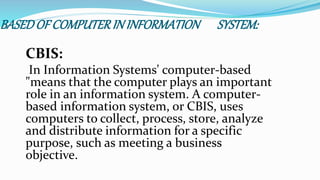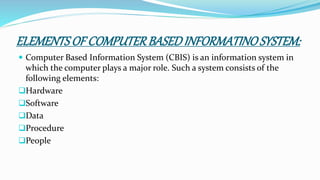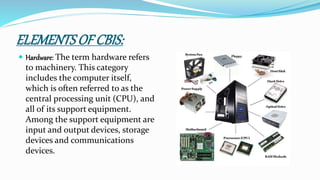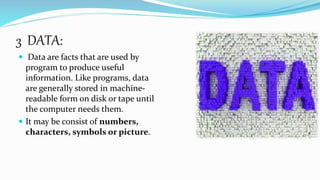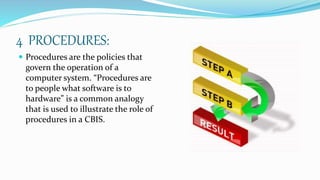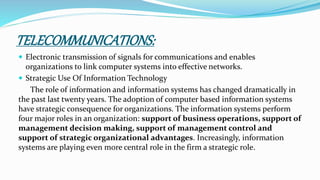The document discusses various types of computer-based information systems. It defines key terms like data, information, systems, and computer-based information systems. It describes the basic elements of a computer-based information system like hardware, software, data, procedures, and people. It also discusses different types of computer-based information systems including management support systems, expert systems, transaction processing systems, and office automation systems.


